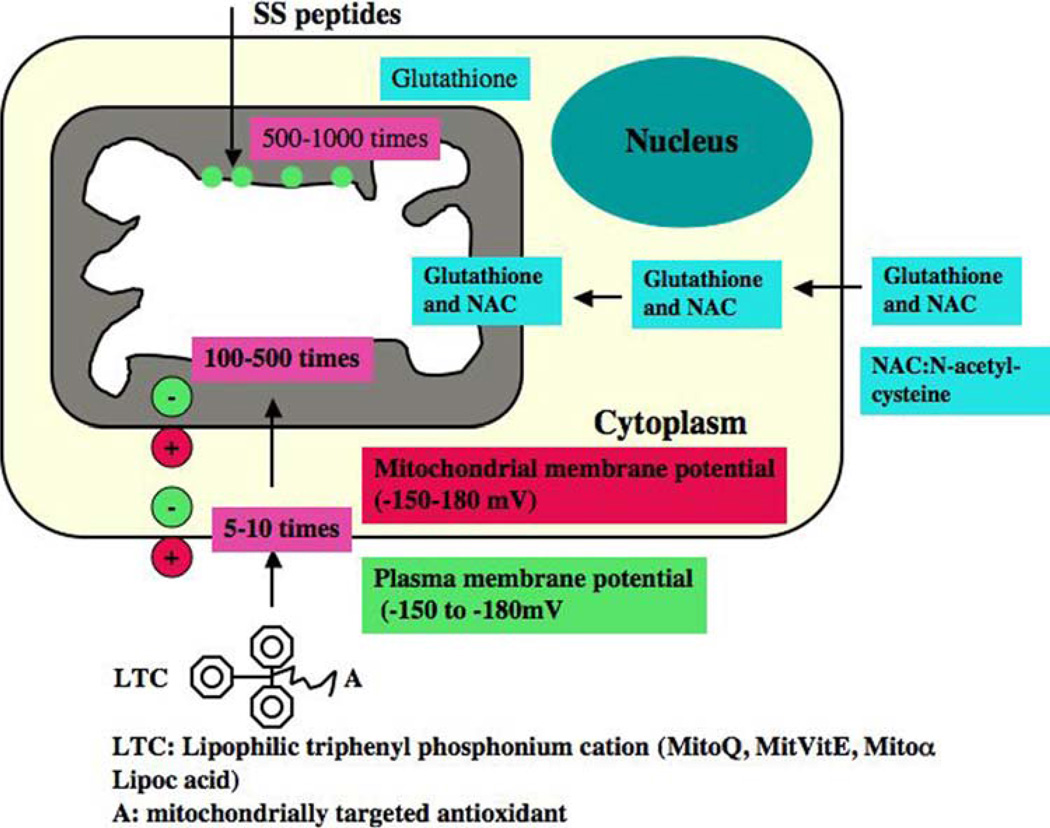Fig. 5.
Strategies of neuronal protection in aging and neurodegenerative diseases. 1. A generic mitochondrially targeted antioxidant is shown constructed by the covalent attachment of an antioxidant molecule to the lipophilic triphenylphosphonium cation. Antioxidant molecules accumulate 5–10 fold in the cytoplasm, which is driven by plasma membrane potential, and then further accumulates 100–500 fold in the mitochondria. Mitochondrial antioxidants rapidly neutralize free radicals and reduce mitochondrial toxicity. 2. Glutathione is synthesized in the cytoplasm and transported to mitochondria. N-acetyl-L-cysteine provides s cysteine for glutathione synthase. Choline esters of glutathione and N-acetyl-L-cysteine have been used to increase mitochondrial glutathione and N-acetyl-L-cysteine. Increased glutathione can rapidly neutralize free radicals and protect mitochondria from oxidative insults. 3. SS peptides are cell-permeable, mitochondrially targeted antioxidants that are reported to protect mitochondria from oxidative damage. These SS peptides have a sequence motif that allows them to target mitochondria several hundred fold more than natural antioxidants. Once SS peptides reach mitochondria, the SS peptides rapidly neutralize free radicals and decrease mitochondrial toxicity

